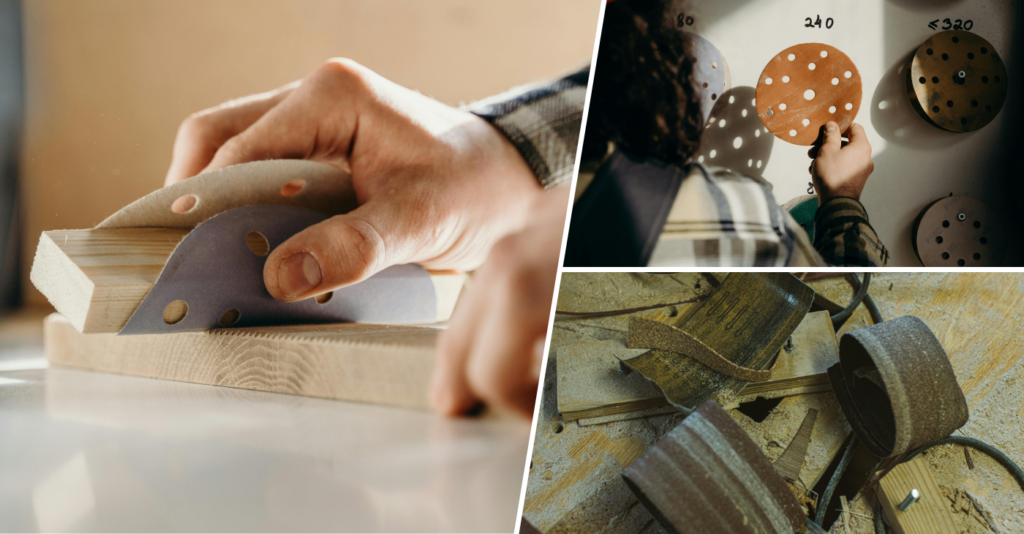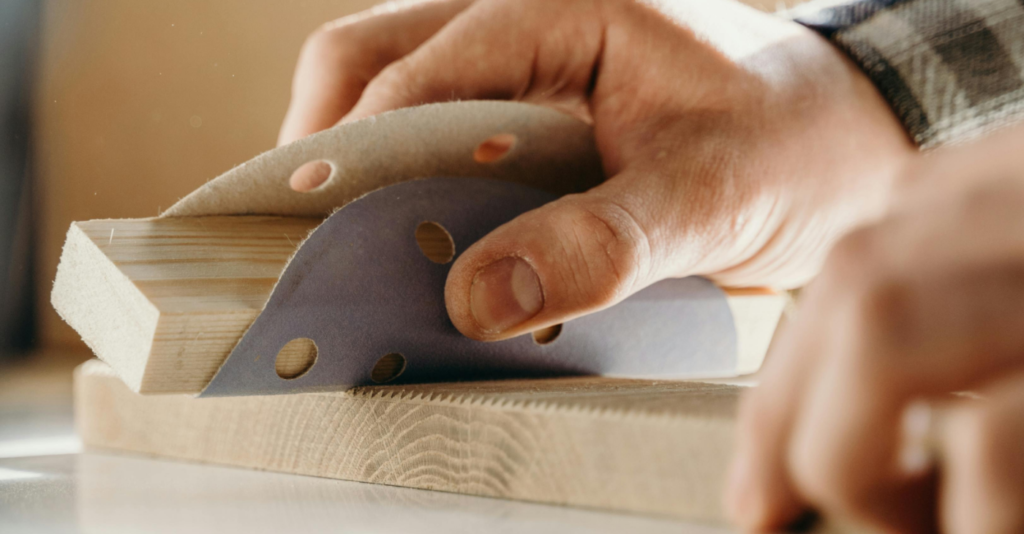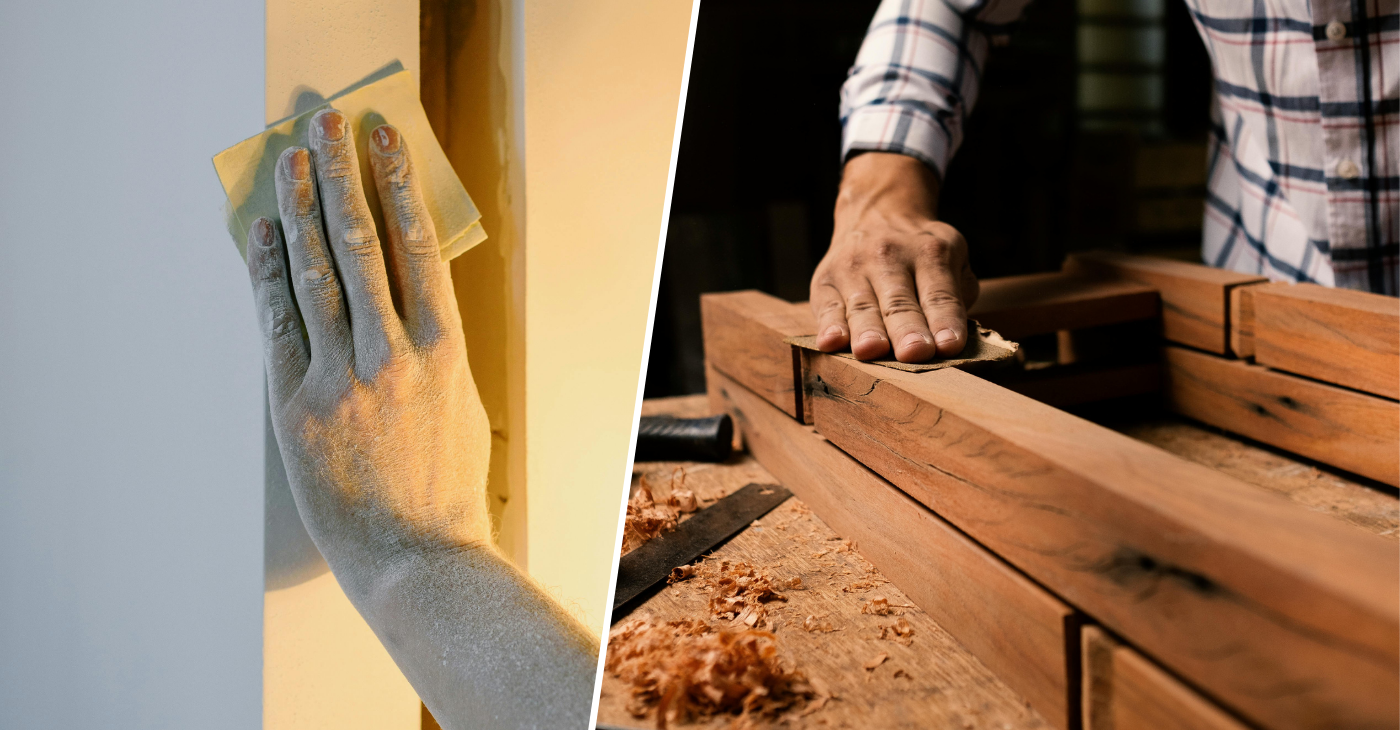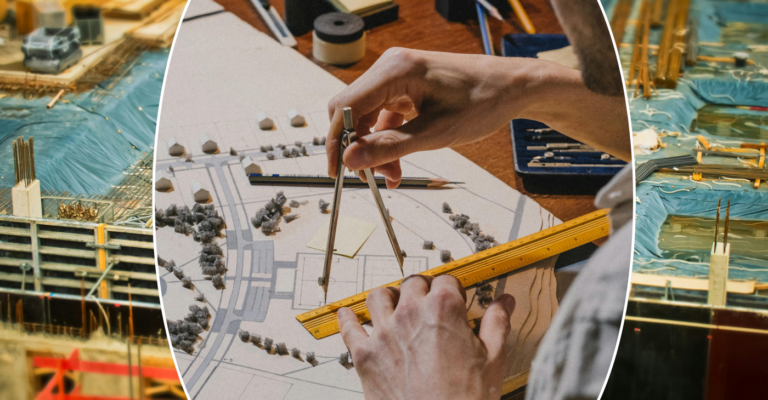What are the different grits of sandpaper used for?
The construction world relies on a symphony of tools, each playing a crucial role in transforming raw materials into a finished structure. Among these essential tools lies the humble yet versatile sandpaper. But with a wide range of grit levels available, choosing the right sandpaper can be just as important as using it. This article delves into the world of sandpaper grits used in construction, exploring how these seemingly simple variations significantly impact the outcome of various tasks. From smoothing rough lumber to achieving a polished finish on concrete, understanding grit levels empowers construction professionals to achieve optimal results at every stage of the building process.
Types of sandpaper grits used in construction
1. Extra coarse (24-36 Grit)
Extra coarse sandpaper is highly abrasive and is used for the most aggressive removal of material. It is ideal for stripping paint, varnish, or other finishes from wood, metal, or concrete. This grit is also used for leveling rough surfaces and removing thick layers of material quickly.
Applications:
- Removing old paint or varnish: When refurbishing old furniture or prepping surfaces for new finishes, extra coarse grit sandpaper efficiently strips away old layers, saving time and effort.
- Shaping wood or metal – For initial shaping of raw materials, extra coarse sandpaper removes substantial amounts of material, providing a rough but workable surface.
- Smoothing rough surfaces – This grit level is perfect for taking down extremely rough edges or surfaces on construction materials, providing a base for subsequent finer sanding stages.
Extra coarse grit is often used with power sanders to speed up the material removal process. Due to its aggressive nature, care must be taken to avoid gouging the material.
2. Coarse (40-60 Grit)
Coarse sandpaper is less abrasive than extra coarse but still used for heavy-duty tasks. It is suitable for removing larger imperfections and for initial stages of surface preparation where significant material removal is needed.
Applications:
- Smoothing out rough wood surfaces – After using extra coarse sandpaper, coarse grit can further refine the surface, making it smoother and more uniform.
- Preparing metal surfaces for painting – Coarse grit sandpaper effectively removes rust and old paint, providing a clean, slightly roughened surface ideal for new paint adhesion.
- Removing rust from metal – In metalworking, coarse grit sandpaper is commonly used to tackle surface rust, revealing clean metal underneath.
This grit is commonly used in conjunction with power sanders and hand sanding blocks. It’s particularly useful for large surface areas and for preparing surfaces for intermediate sanding.
3. Medium (80-120 Grit)
Medium grit sandpaper is a versatile choice for general-purpose sanding. It is often used after coarse sandpaper to smooth out surfaces and remove any remaining imperfections before moving on to finer grits.
Applications:
- Preparing bare wood for finishing – Medium grit sandpaper is ideal for the initial sanding of bare wood surfaces, creating a smooth surface ready for further sanding or finishing.
- Smoothing edges and corners: –When working with wood or drywall, medium grit sandpaper helps smooth out edges and corners, ensuring a more professional finish.
- Removing light surface imperfections – For surfaces that only need minor smoothing, medium grit sandpaper can remove small scratches and blemishes effectively.
Medium grit sandpaper strikes a balance between material removal and surface smoothing. It is often used in both initial and intermediate stages of sanding, providing a good foundation for finer grits.

4. Fine (150-180 Grit)
Fine grit sandpaper is used for the final stages of surface preparation before finishing. It helps create a smooth, even surface that is ready for paint, stain, or varnish. This grit is ideal for light sanding between coats of finish.
Applications:
- Final sanding of wood before finishing – Before applying the final coat of paint or varnish, fine grit sandpaper ensures the wood surface is smooth and free of imperfections.
- Smoothing surfaces between coats of paint or varnish – Fine grit sandpaper lightly abrades the surface between coats, promoting better adhesion of subsequent layers.
- Light sanding of drywall – For drywall installations, fine grit sandpaper smooths out joint compound and prepares walls for priming and painting.
Fine grit sandpaper is essential for achieving a high-quality finish. It is typically used by hand or with a sanding block to ensure precise control and a smooth result.
5. Very fine (220-240 Grit)
Very fine sandpaper is used for ultra-smooth finishes. It is perfect for sanding between coats of finish to achieve a high-quality surface. This grit is also used for final sanding before applying the last coat of paint or varnish.
Applications:
- Sanding between coats of paint or varnish – Very fine grit sandpaper ensures that each coat adheres well and that the final finish is smooth and even.
- Final preparation of surfaces before finishing – Before the last coat of paint or varnish, very fine grit sandpaper smooths out any remaining minor imperfections.
- Smoothing surfaces for a polished look – This grit level is used to achieve a polished, professional look on finished surfaces.
Very fine grit sandpaper is often used in woodworking and finishing projects. It is crucial for achieving a smooth, high-quality finish on a variety of materials.
6. Extra fine (320-400 Grit)
Extra fine sandpaper is used for polishing and finishing surfaces to a high sheen. It is commonly used in woodworking and automotive finishing to achieve a smooth, glossy finish.
Applications:
- Polishing wood or metal surfaces – Extra fine grit sandpaper creates a smooth, polished surface, ideal for final finishing.
- Finishing touch on high-gloss finishes – For high-gloss paint or varnish finishes, extra fine grit sandpaper provides the final touch, ensuring a mirror-like finish.
- Smoothing surfaces for an ultra-smooth finish – This grit is used to remove any last traces of imperfections, leaving a perfectly smooth surface.
Extra fine grit sandpaper is often used with a light touch to avoid over-sanding and to achieve the desired level of smoothness and shine.
7. Super fine (600 Grit and above)
Super fine sandpaper is used for delicate tasks that require an exceptionally smooth surface. This grit is often used in the final stages of polishing and finishing in woodworking, metalworking, and automotive applications.
Applications:
- Polishing fine woodwork – For high-end woodworking projects, super fine grit sandpaper provides the final polish, enhancing the natural beauty of the wood.
- Final buffing of finishes – In automotive and metalworking, super fine grit sandpaper is used for final buffing to achieve a high-gloss, reflective finish.
- Smoothing and polishing metal surfaces – Super fine grit sandpaper is ideal for polishing metal surfaces, removing any last traces of scratches and imperfections.
Super fine grit sandpaper is often used with water or other lubricants to achieve a smooth, polished finish without creating additional scratches.

Choosing the right grit
The choice of sandpaper grit depends on the specific task and the material being worked on. Here are some general guidelines to help you choose the right grit:
- Heavy material removal – Start with extra coarse or coarse grit to quickly remove large amounts of material.
- General purpose sanding – Use medium grit for most surface preparation tasks, as it balances material removal and surface smoothing.
- Surface smoothing – Use fine or very fine grit for final surface preparation before finishing, ensuring a smooth, even surface.
- Polishing and finishing – Use extra fine or super fine grit for achieving a polished, high-quality finish, particularly on delicate or high-gloss surfaces.
Techniques and tips for sanding
Achieving the best results with sandpaper involves more than just selecting the right grit. Here are some additional tips and techniques for effective sanding:
- Use a sanding block – Using a sanding block or pad helps distribute pressure evenly, preventing gouges and ensuring a smoother surface.
- Sand with the grain – When sanding wood, always sand with the grain to avoid scratches and achieve a smoother finish.
- Gradually progress through grits – Start with a coarser grit and gradually progress to finer grits for the best results. Skipping grits can lead to an uneven finish.
- Keep sandpaper clean – Regularly clean the sandpaper to remove dust and debris, which can clog the abrasive surface and reduce effectiveness.
- Apply even pressure – Apply even pressure when sanding to avoid creating uneven surfaces or gouges.
Summary to different types of sandpaper grits
Understanding the different types of sandpaper grits is essential for achieving the best results in your construction projects. Each grit size serves a specific purpose, from heavy material removal to fine polishing. By choosing the right sandpaper grit for the task at hand, you can ensure a smooth, even surface that is ready for painting, staining, or varnishing. Whether you are working on wood, metal, or drywall, selecting the appropriate sandpaper grit will help you achieve a professional finish and a high-quality result.
FAQS
1. What is sandpaper grit and why is it important in construction?
Sandpaper grit refers to the size of the abrasive particles on the sandpaper. It is important in construction because different grit sizes are used for various tasks, from rough shaping to fine finishing, ensuring surfaces are prepared correctly for painting, staining, or other finishes.
2. What is the purpose of using extra fine grit sandpaper (320-400 grit) in construction?
Extra fine grit sandpaper is used for polishing and finishing surfaces to a high sheen. It is commonly applied in woodworking and automotive finishing to achieve a smooth, glossy finish. It is also used for the final touch on high-gloss finishes and smoothing surfaces to an ultra-smooth finish.
3. Why is it recommended to use a sanding block with sandpaper?
Using a sanding block helps distribute pressure evenly, preventing gouges and ensuring a smoother, more uniform surface. It provides better control and can improve the efficiency and effectiveness of sanding, especially on flat or large surfaces.
4. How do I choose the right sandpaper grit for my project?
Choosing the right sandpaper grit depends on the specific task and material. For heavy material removal, start with extra coarse or coarse grit. For general-purpose sanding, use medium grit. For surface smoothing, opt for fine or very fine grit. For polishing and finishing, extra fine or super fine grit is recommended.
5. Can I use the same sandpaper for both wood and metal?
While you can use the same sandpaper on both wood and metal, it’s important to select the appropriate grit for each material and task. For example, coarse grit may be needed for removing rust from metal, while medium or fine grit may be suitable for smoothing wood surfaces. Always ensure the sandpaper is compatible with the material you’re working on.
6. What is the difference between dry and wet sandpaper?
Dry sandpaper is designed for use without water and is suitable for most sanding tasks, especially on wood. Wet sandpaper, also known as wet/dry sandpaper, can be used with water or other lubricants. It is typically used for finer grits and is ideal for achieving ultra-smooth finishes, reducing dust, and preventing clogging.
7. Can I use sandpaper to remove minor scratches and blemishes from surfaces?
Yes, sandpaper can effectively remove minor scratches and blemishes. Start with a medium or fine grit to smooth out the imperfections, then gradually move to finer grits to achieve a polished finish. Ensure you sand evenly and follow the grain of the material to avoid creating new scratches.







